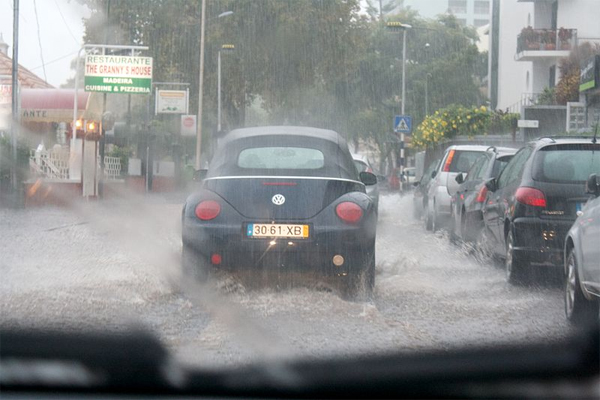Driving in wet conditions can be problematic – sodden roads can affect a car’s handling, and decrease visibility. So here are 10 quick tips that will help to keep you safe.
Table of Contents
1) Preparation is Everything
Keeping your vehicle in peak condition is important all year round, but is particularly so in wet conditions. So ensure that your car is prepared for tricky weather, with new windscreen wiper blades and tyres with the right air pressure and tread depth.
2) Plan Your Route
If your route takes you through notorious flood spots or hilly ground, you might be better off finding an alternative. This could save you time in the long run, and minimize your risk of accident.
3) Take It Steady!
It takes double the time for your vehicle to slow down and come to a stop in wet conditions, as brakes will be less responsive. So take it steady; remember, the speed limits on each road are a MAXIMUM, so ensure you drive appropriately for the conditions.
4) Light Up
Even if it is raining during daylight hours, visibility is still significantly decreased, as are light levels. Turn your dim headlights on, so that you can see the road better and so that other road users can see you.
5) Keep Your Distance
In ordinary conditions a following distance of two seconds is recommended by motoring experts. This should be doubled in wet weather, as vehicles, especially vans and lorries, create a lot of spray which will significantly hamper your visibility if you get too close.
6) Caution With The Brakes
Applying brakes in wet weather can be a hazard in itself if too much pressure is applied, and can lock wheels and cause skidding. Smartmotorist.com suggest braking earlier and with less pressure applied. This should also let any vehicles behind you see your intentions quicker, and adjust their driving accordingly.
7) Keep Your Eyes Peeled
In particularly heavy rain there can be noticeable puddles of standing water on the roads. These can cause your vehicle to skid or – in extreme conditions – aquaplane. So cut your speed to minimise the risk, and keep your eyes peeled!
8) Don’t Overtake Unless Necessary
It can be frustrating getting stuck behind a slow-moving vehicle, but overtaking in wet conditions can be hazardous. If it is absolutely essential to overtake then proceed with caution and clarity.
9) Beware of Moving Water
If you see a large stretch of water that is moving, then do your utmost to avoid it. With enough velocity these can sweep you off the road. Likewise, if the puddle appears to be deep then avoid driving through it, as this could cause serious damage to a car’s electrics.
10) Stay On The Road
If you’ve seen comedy clip shows such as You’ve Been Framed, you’ll know the scrapes that vehicles can get into driving on wet grass and mud. Not only will you spend the best part of your weekend digging mud out of your grille, but you could also be hit with an expensive repair bill and car insurance renewal quote.
Image Credited: Wikimedia Commons













